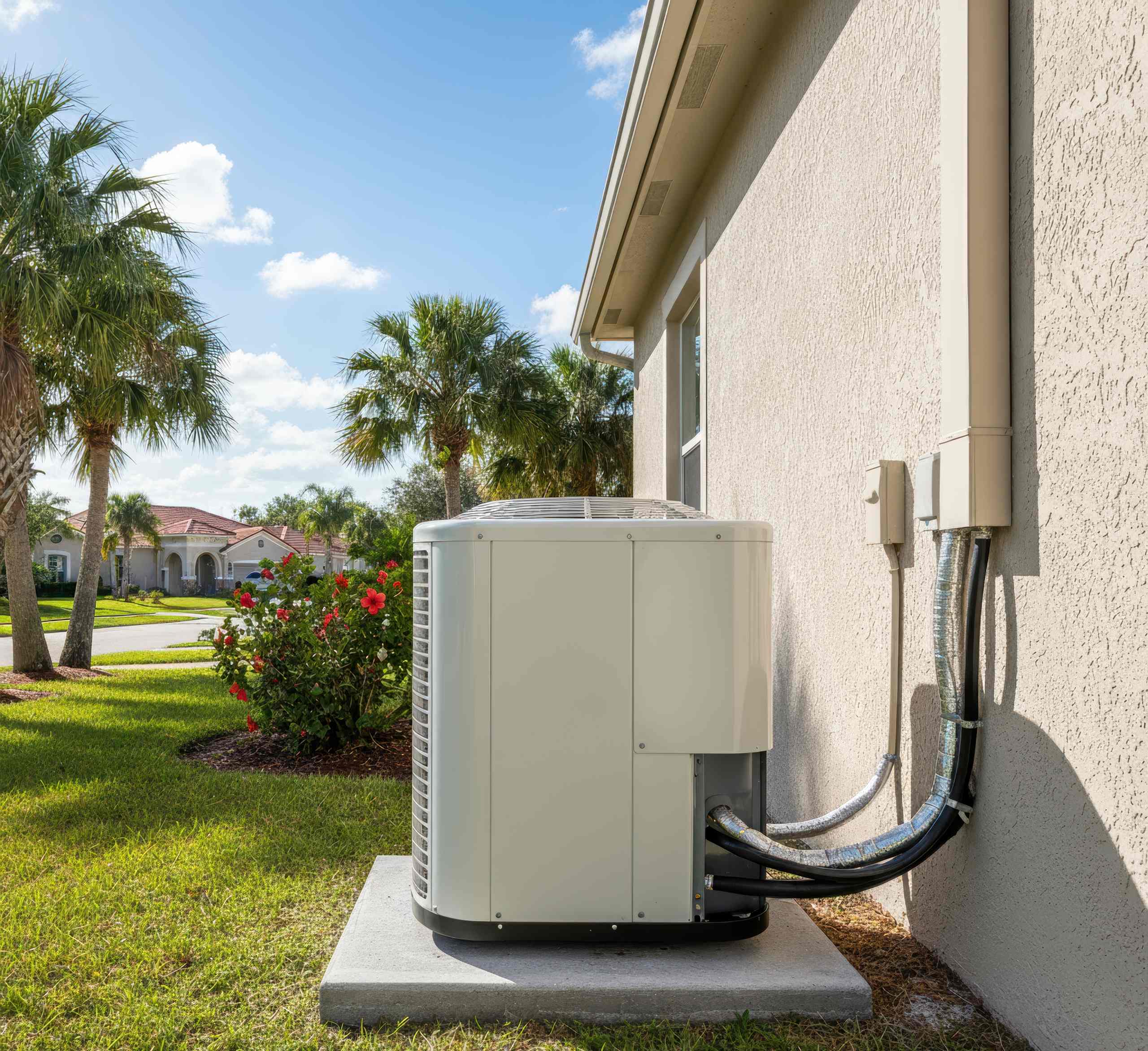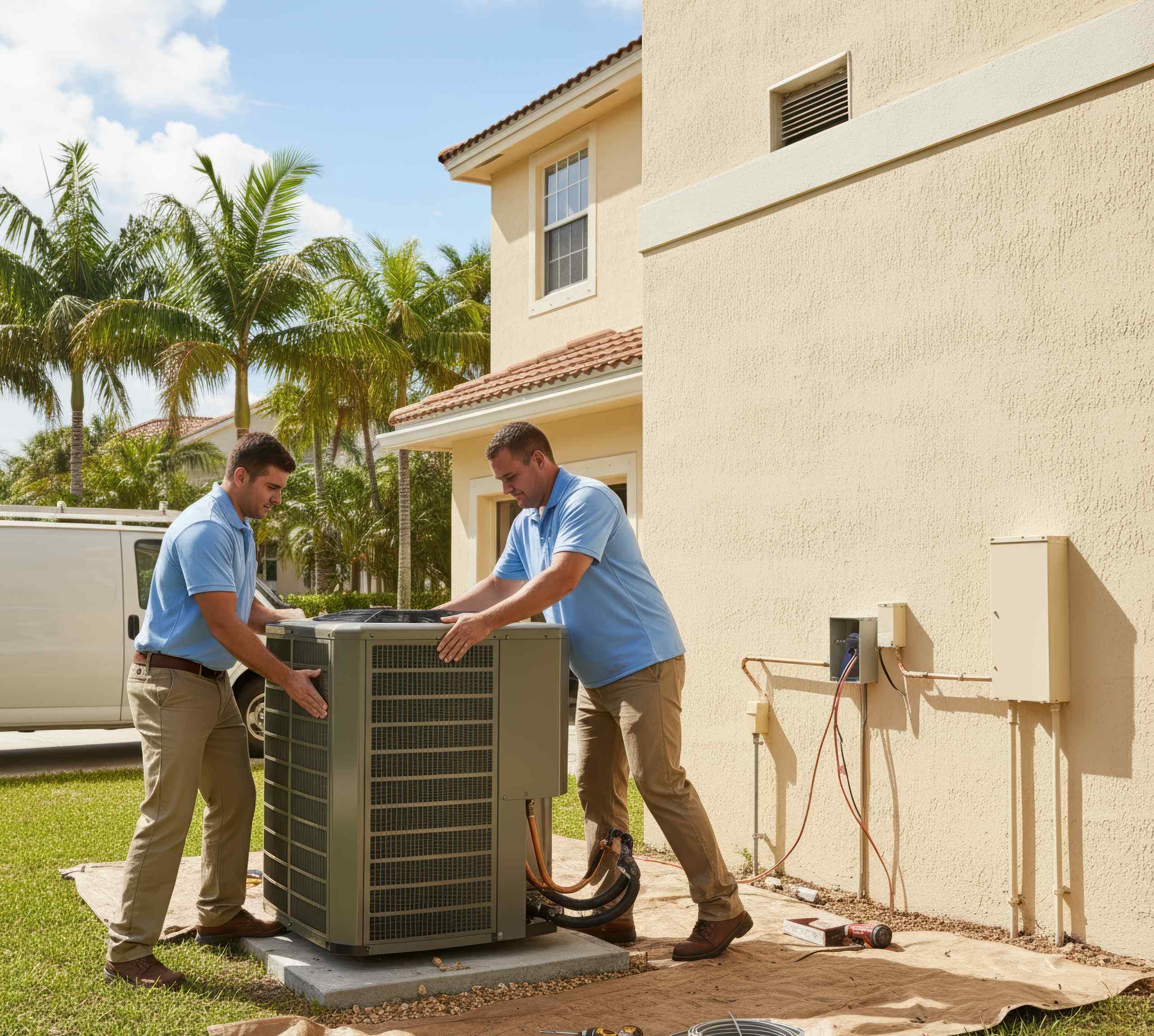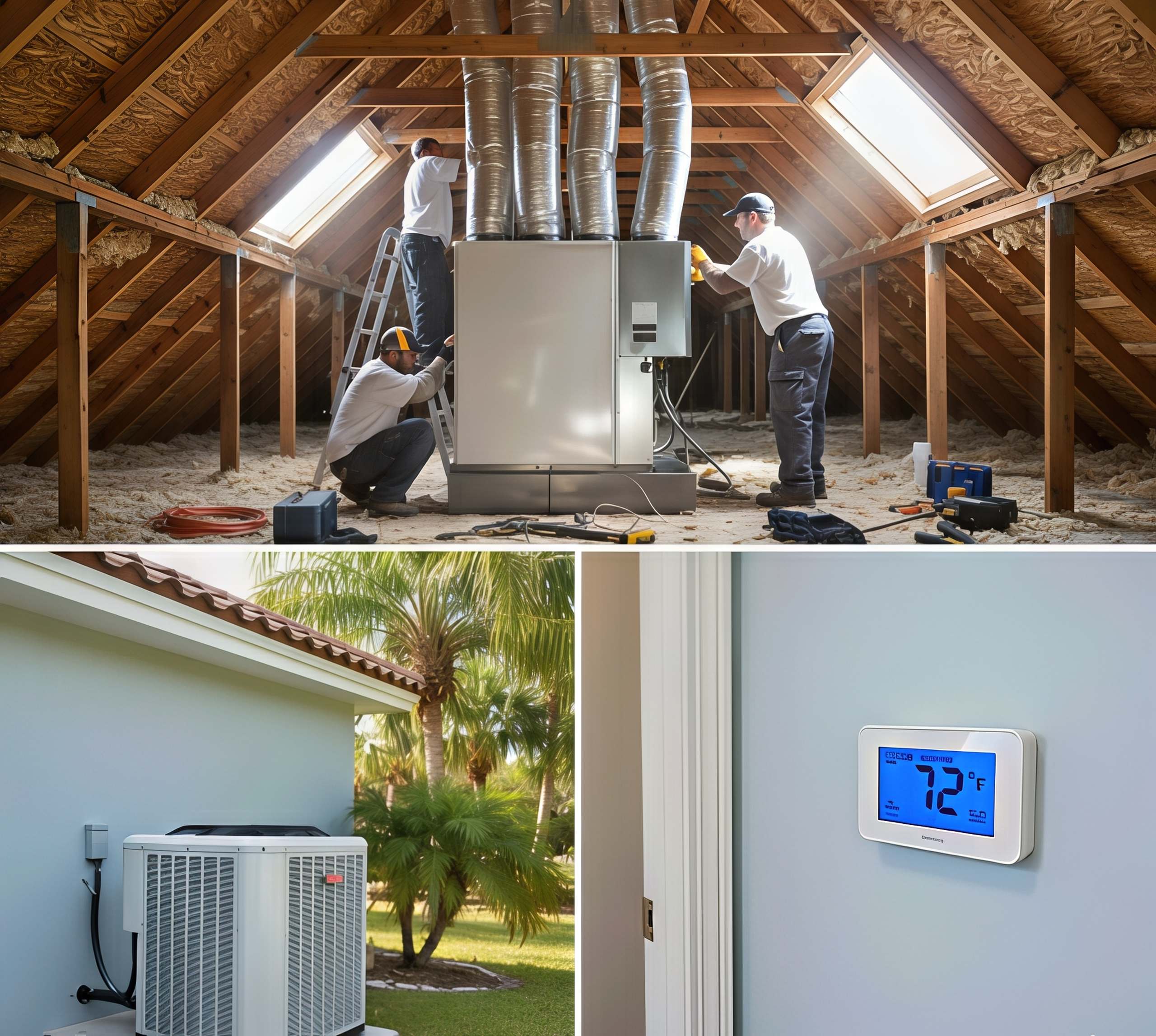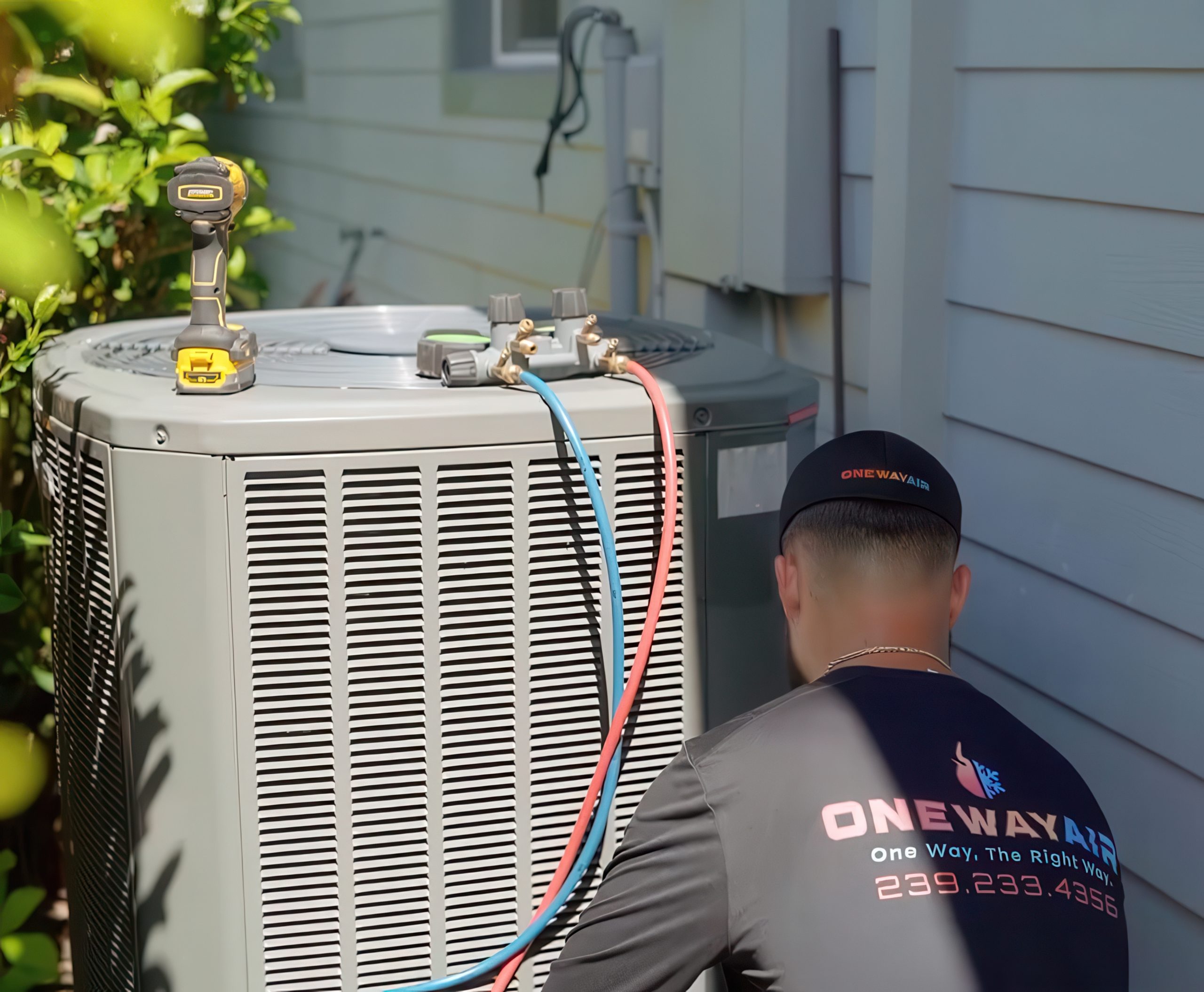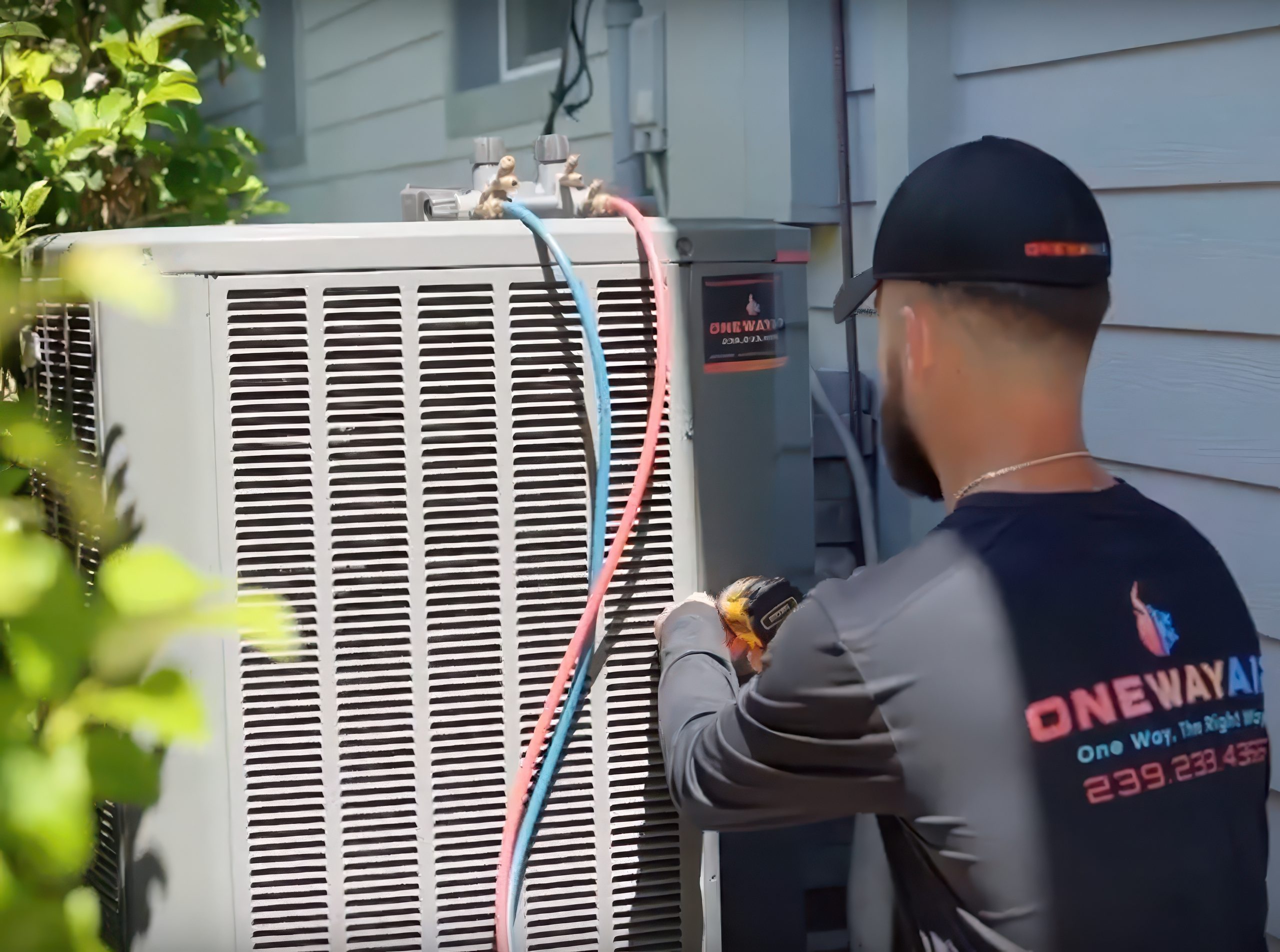The U.S. Energy Information Administration (EIA) estimates that over 70 percent of homes nationwide have ceiling fans installed.
In the warmth and humidity of Florida, ceiling fans work well with air conditioning systems to maintain comfort and good air circulation while keeping energy bills manageable.
As a homeowner, you may have heard that your ceiling fan should rotate anti-clockwise in the summer and in the reverse direction in the winter. Is this right? And what are the benefits of a fan turning anti-clockwise during the summer months?
Let’s find out…
WHAT IS THE BENEFIT OF A FAN TURNING ANTI-CLOCKWISE DURING SUMMER?
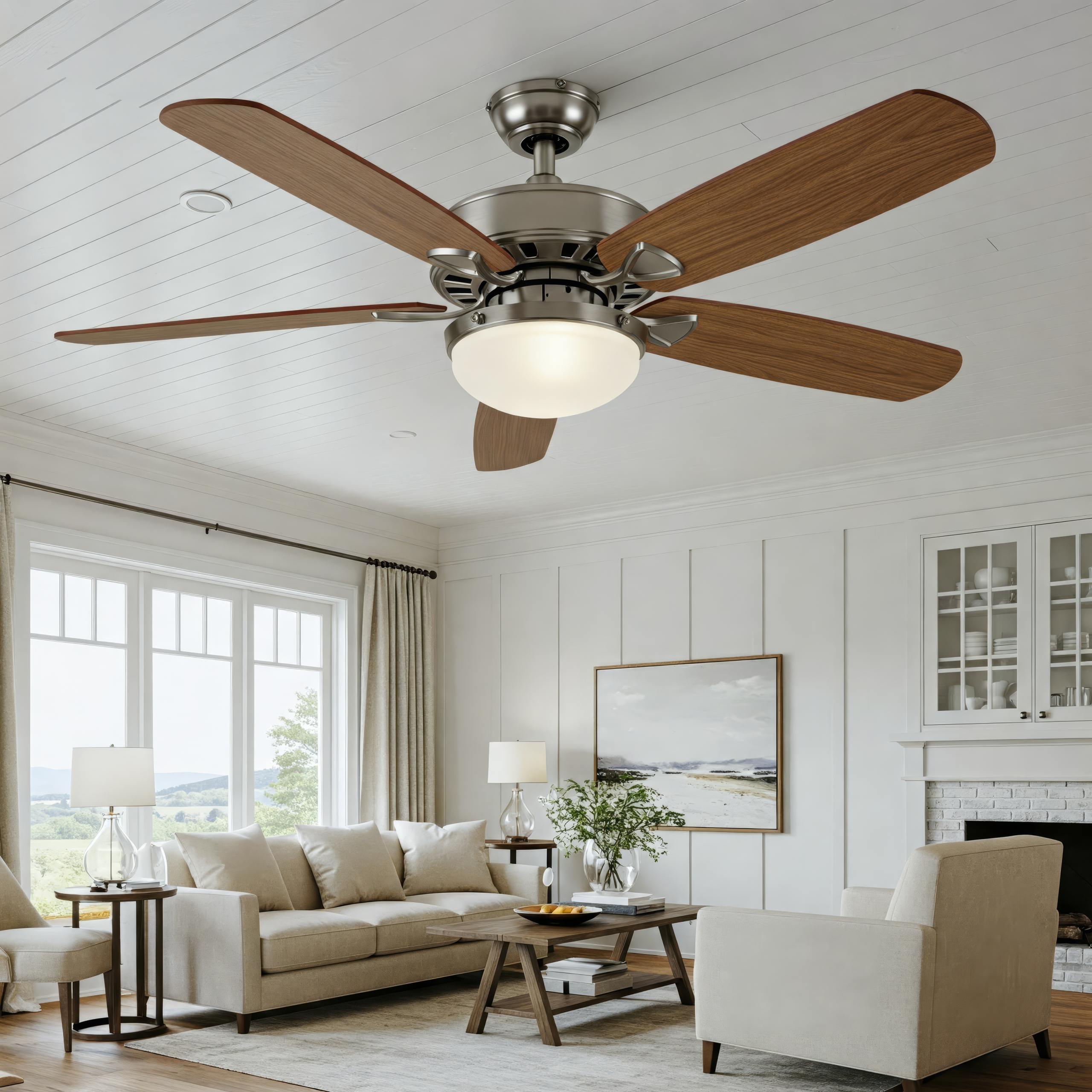
There are four main benefits of a fan turning anti-clockwise during summer: greater cooling effect, more comfort, better air circulation, and energy savings (lower bills). While most Florida homes have air conditioning systems installed, ceiling fans can supplement the home’s cooling while helping to keep a lid on the monthly energy bills.
STAY COOL ALL YEAR ROUND WITH ONE WAY AIR…
The team at One Way Air installs, services, and repairs all types of air conditioning systems in Southwest Florida. Get in touch with us here for a quote or call 239-233-4356 in emergencies.
UNDERSTANDING CEILING FAN ROTATION
When we talk about the ceiling fan direction, we mean the direction the blades turn when viewed from below, looking directly up.
So, a clockwise direction appears like a standard clock with the hands rotating from right to left. Anti-clockwise means the reverse direction.
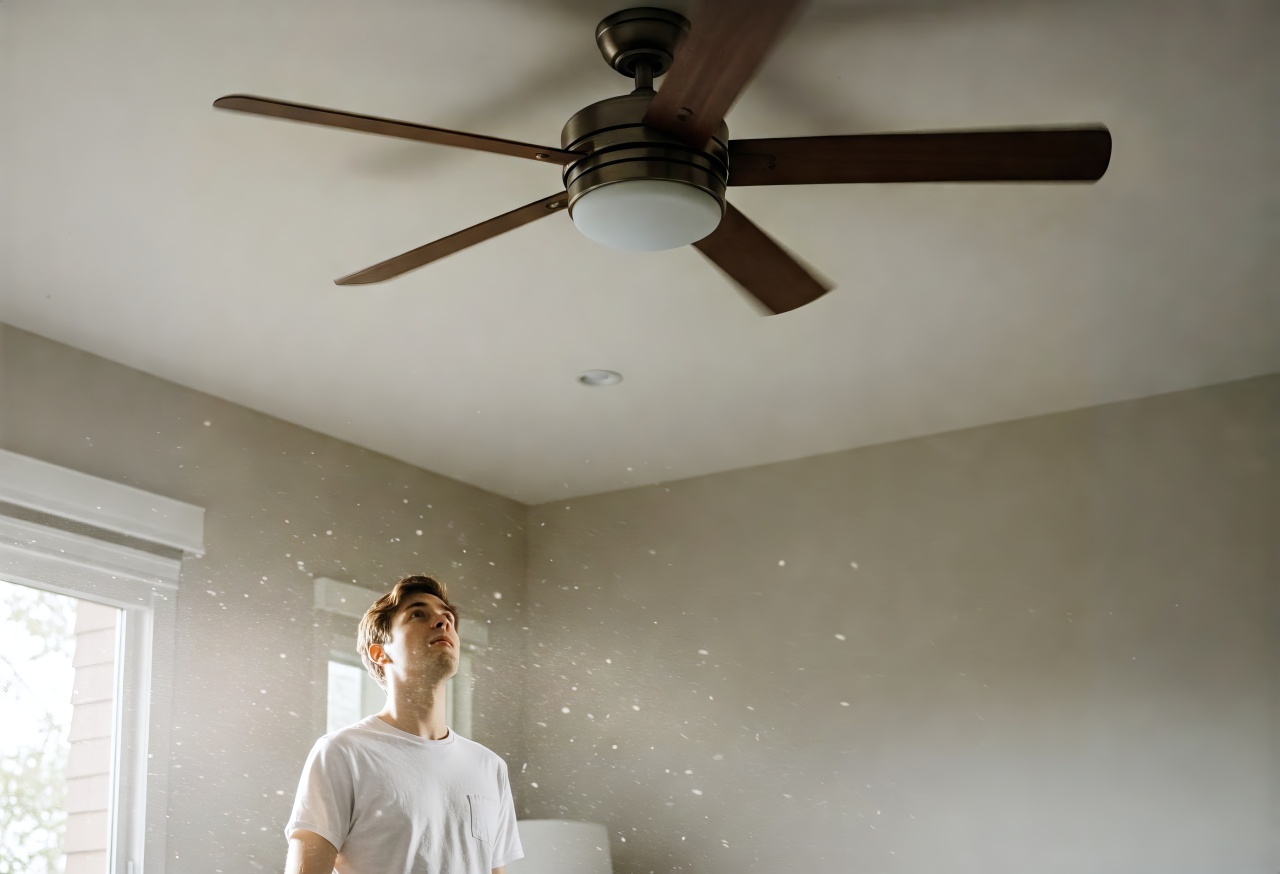
If you examine your fan blades, you’ll notice that they are almost flat but mounted on the fan at an angle. This is called the “blade pitch”, which is important because it creates airflow. Some homeowners don’t realize that the direction of the turn of the ceiling fan blades makes a difference.
Ceiling fan blades essentially push air according to the way they rotate. They are specifically designed to aid cooling in the summer by rotating anti-clockwise. They create a downdraft, which pushes cooler air down and towards the floor—resulting in a cooling effect.
Often, the additional cooling from a ceiling fan can allow homeowners to raise their thermostats by a few degrees Fahrenheit in summer, saving energy due to the “wind chill” factor created in the home.
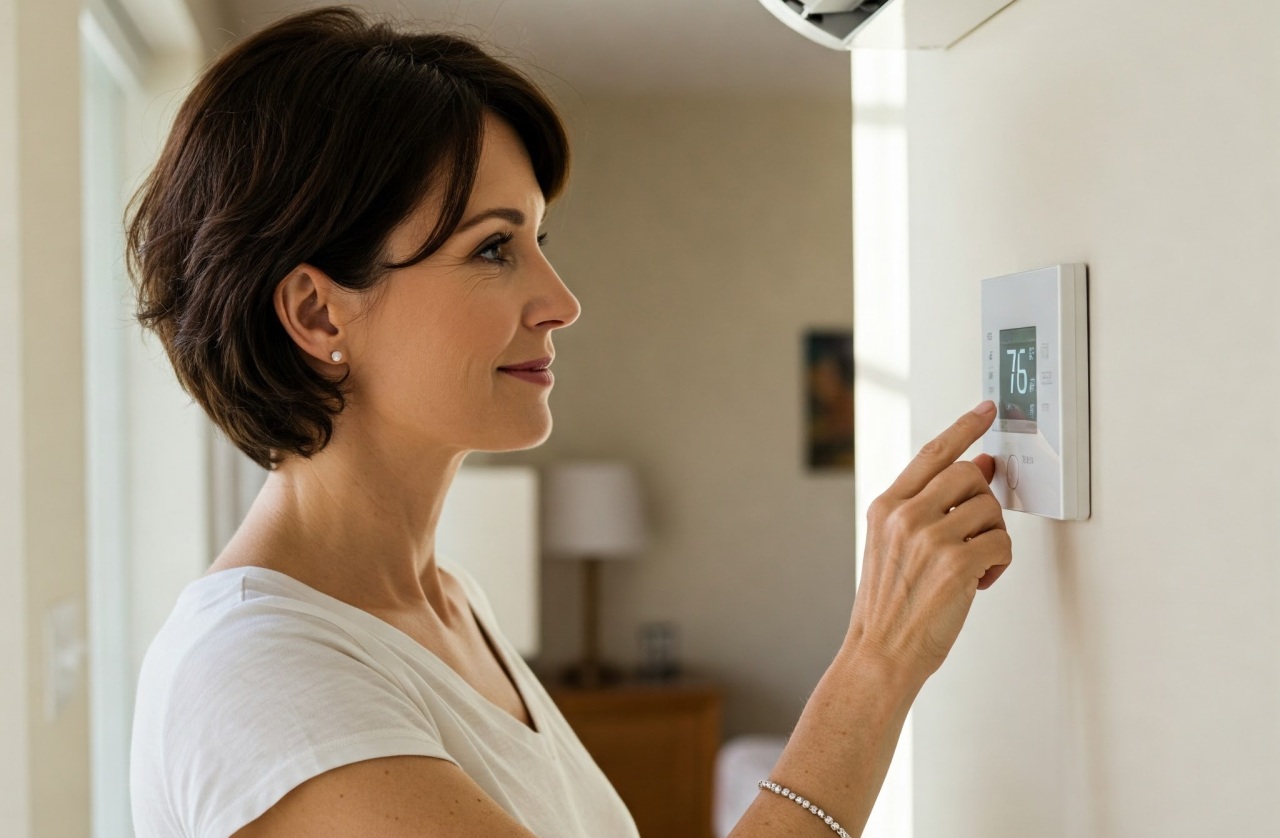
HOW ANTI-CLOCKWISE ROTATION HELPS IN SUMMER
An anti-clockwise ceiling fan direction in summer is better for your pocket—and your family’s comfort levels.
“WIND CHILL” IMPROVES HOME COOLING
The anti-clockwise motion of the fan blades forces air downwards, improving the circulation and creating a “wind chill”.
The wind chill effect makes the room feel cooler and helps maintain comfort levels, especially when used with air conditioning. It doesn’t change the room’s actual temperature but the enhanced air circulation improves the perceived comfort levels because of its evaporative effect on the skin. In other words, fans cool people, not air.
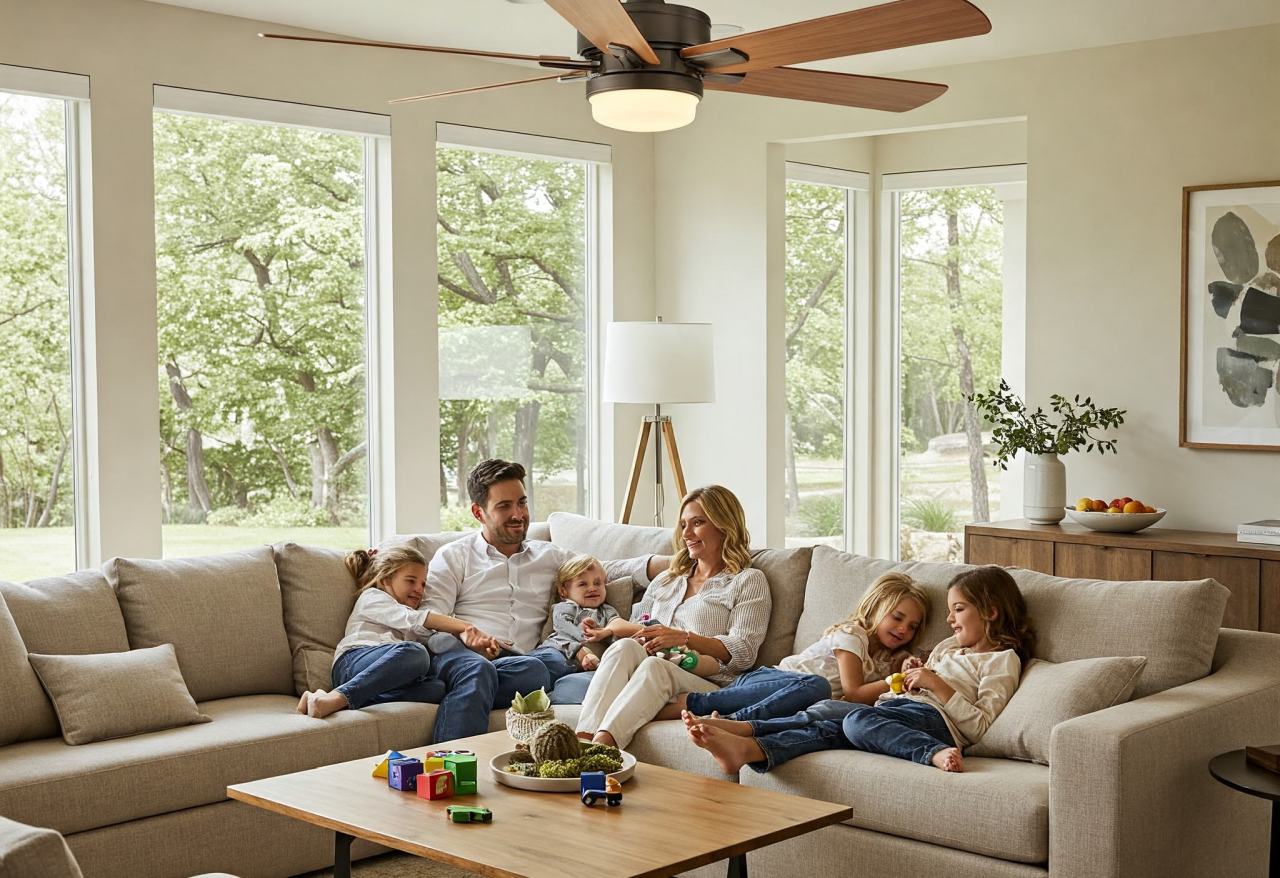
ENERGY SAVINGS FROM HIGHER THERMOSTAT SETTINGS
The fact that the rooms feel cooler may allow homeowners to reduce their thermostat settings in summer by a degree or two. This can lead to lower energy usage and, ultimately, lower monthly bills.
These savings should be a welcome benefit for homeowners in Florida, who must meet the high costs of air conditioning their homes.

ENVIRONMENTAL BENEFITS
The higher AC thermostat settings, less reliance on air conditioning, and lower energy usage are better for the environment as well as your family’s comfort and your pocketbook.
One study notes the following: “Taking an annual perspective, the use of fans with air speeds of 1·2 m/s compared with air conditioner use alone resulted in a 76% reduction in energy use… and associated greenhouse gas emissions…”
MORE CONSISTENT COOLING
In rooms with high ceilings, especially, pockets of warm air can form. Ceiling fans can help maintain a more consistent temperature by circulating air so that it “mingles” better and evens out the air temperature, reducing the risk of hot spots in the home.
REDUCED PESTS AND MOLD
Ceiling fans also benefit homeowners by reducing the threat of mold and pests like mosquitoes in summer.
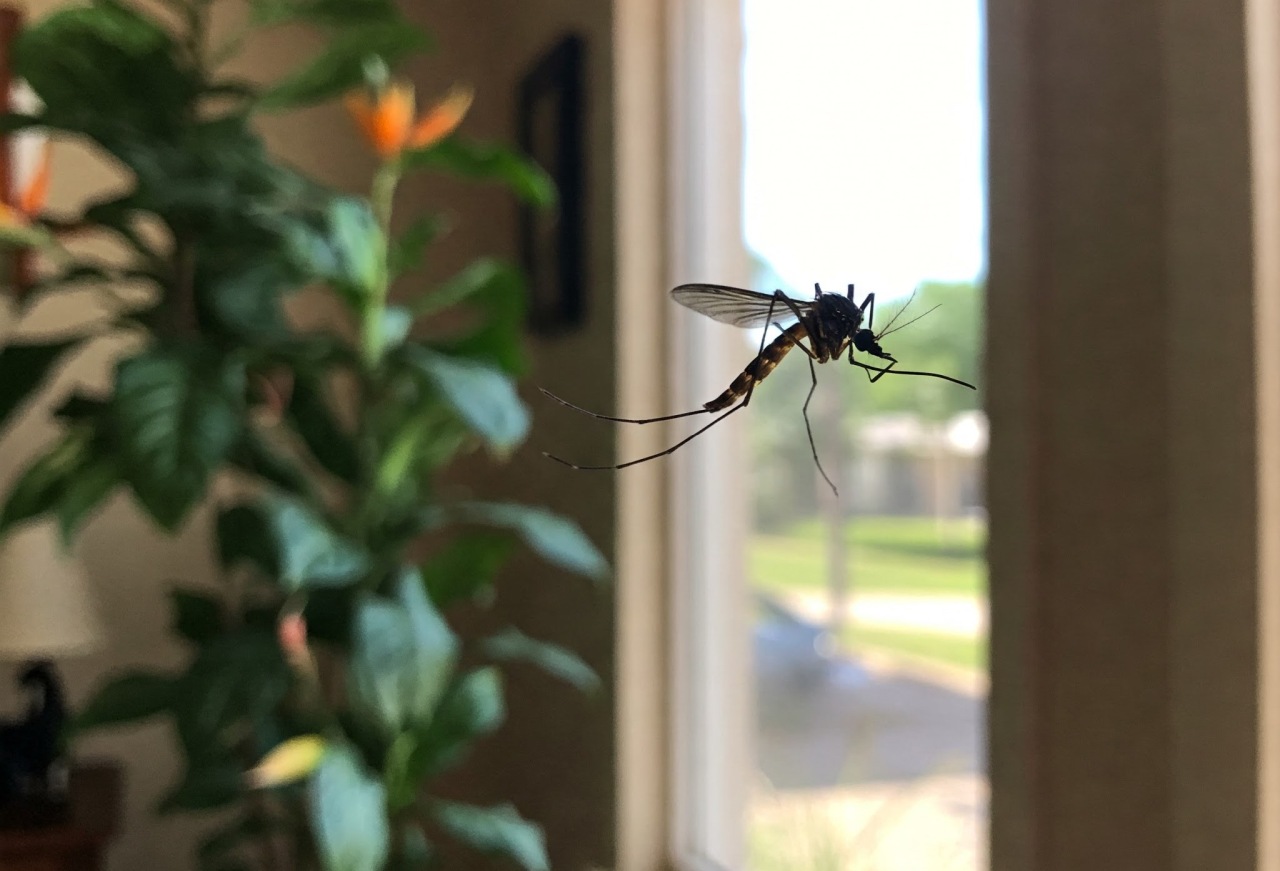
The increased air circulation helps create conditions that these household irritations cannot tolerate well. So, consider your ceiling fan a natural insect repellent that can improve indoor air quality.
HOW MUCH ENERGY CAN YOU SAVE BY USING A CEILING FAN?
Small adjustments can yield significant improvements.
Studies show that modern ceiling fans provide a 2–4 °C (4-8°F) cooling effect. Other estimates suggest that using a ceiling fan along with your air conditioner can save you about 3–5 percent in energy for each degree Fahrenheit you raise the thermostat.
So, by raising the thermostat’s temperature by 4 degrees Fahrenheit, you could potentially save 12–20 percent on your cooling bill.
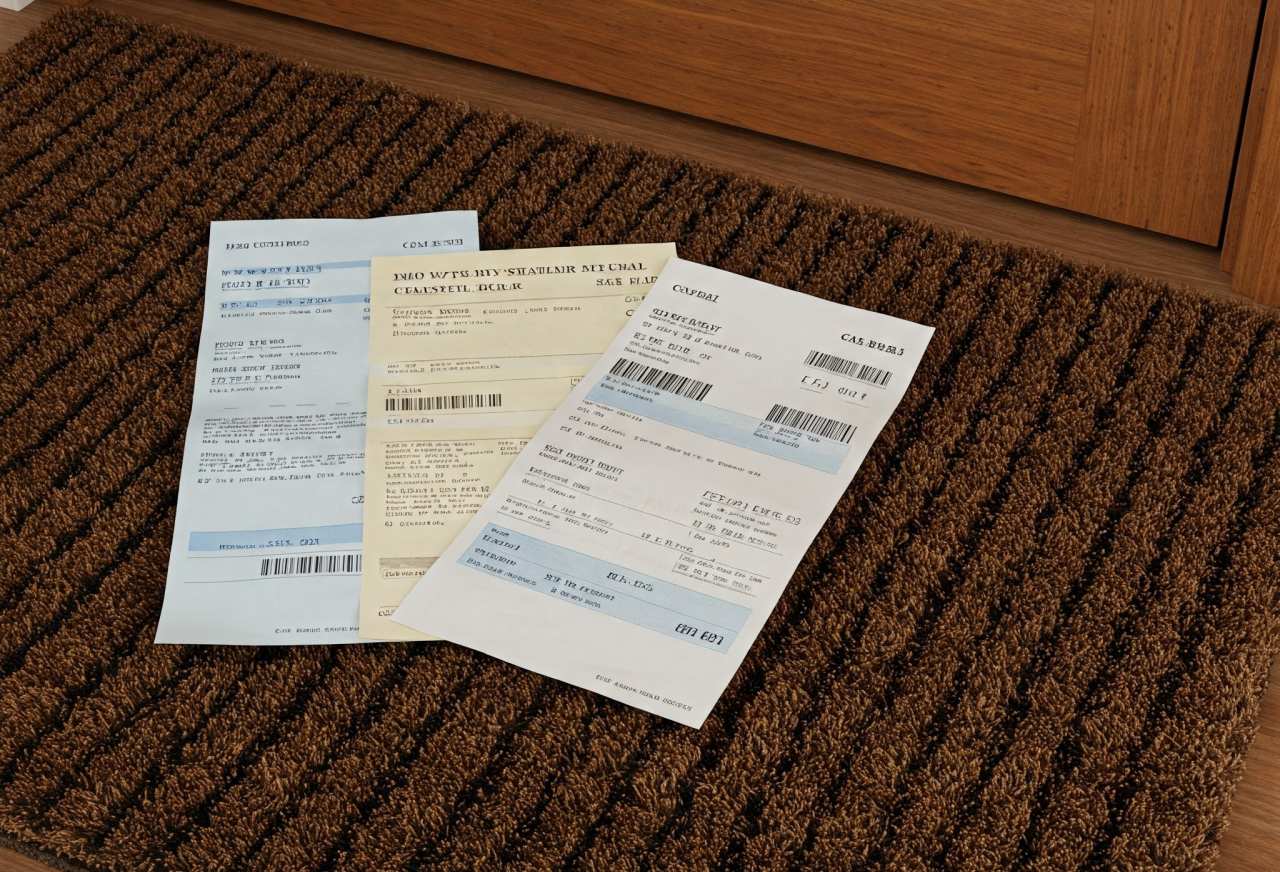
The wind chill effect of a ceiling fan allows you to raise your thermostat by about 4°F without sacrificing comfort. For example, if you usually set your AC to 72°F, you could raise it to 76°F when using a ceiling fan without sacrificing comfort.
However, it’s best to use an ENERGY STAR® rated ceiling fan for maximum efficiency—and you’ll need to remember to switch the fan off when not using the room.
COMMON MISTAKES FROM HOMEOWNERS
Homeowners in Florida regularly make the mistake of running the fan clockwise in summer. Often, this is because they never change the fan direction throughout the year.
In winter, clockwise is the best direction for ceiling fan airflow. This redistributes warm air through the room. However, for home comfort in hot weather, the direction should be changed to anti-clockwise.
Here’s an easy way to remember the right direction for a ceiling fan:
SUMMER—>COOL DOWN—>COUNTERCLOCKWISE=DOWNDRAFT
WINTER—>WARM UP—>CLOCKWISE= UPDRAFT
Homeowners also regularly forget to switch off fans when not in the room, which isn’t doing much to save energy bills!
HOW TO CHANGE YOUR FAN DIRECTION
With traditional ceiling fans, you can change the direction of the blades by doing this:
- Turn off the fan and wait for the blades to stop moving
- Find the switch that controls the blade direction (usually on the fan body or light fixture)
- Toggle the switch to change the direction
- If necessary, replace the light glass
- Turn the fan back on
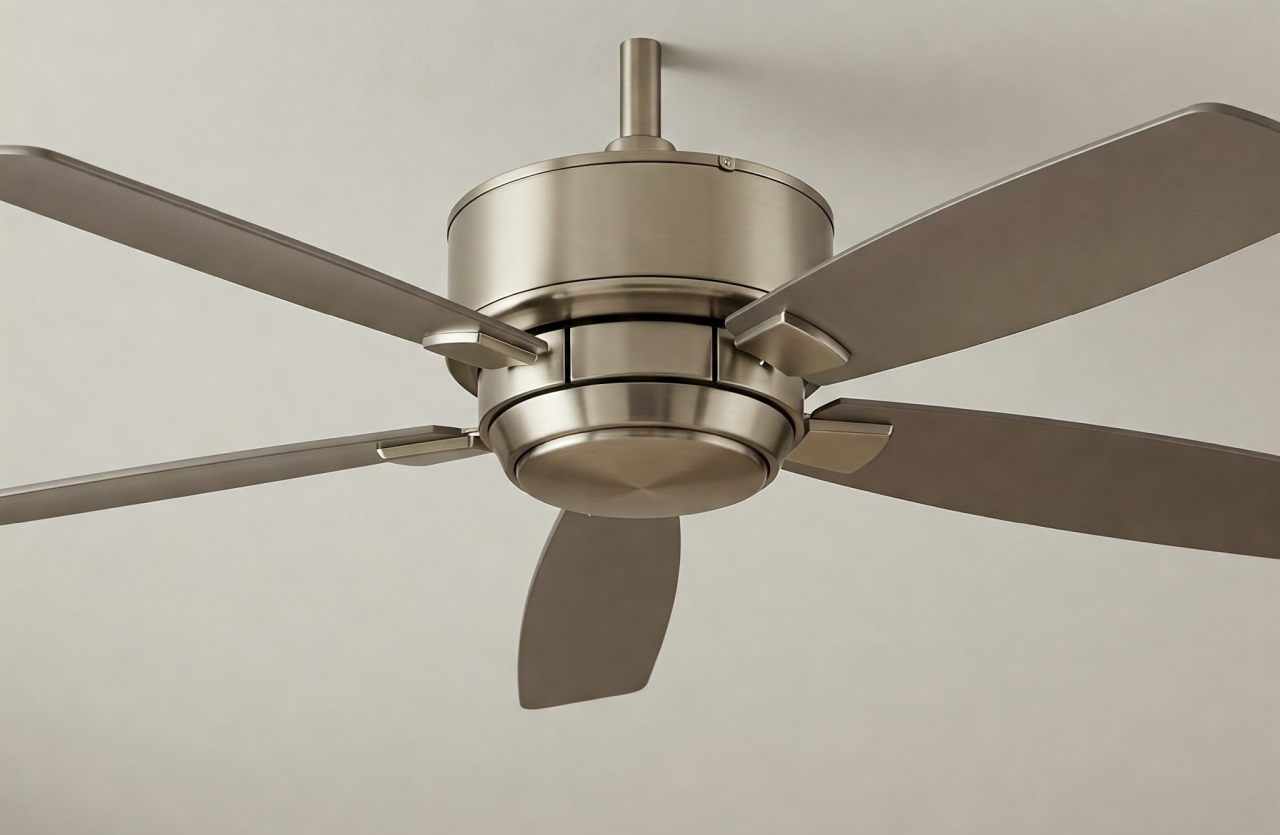
For fans with remote controls, you’ll need to do this:
- Turn off the fan and let it come to a complete stop
- Press and hold the fan button on the remote control, which usually reverses the direction of the fan (if not, check the user manual for instructions)
- Turn the fan back on
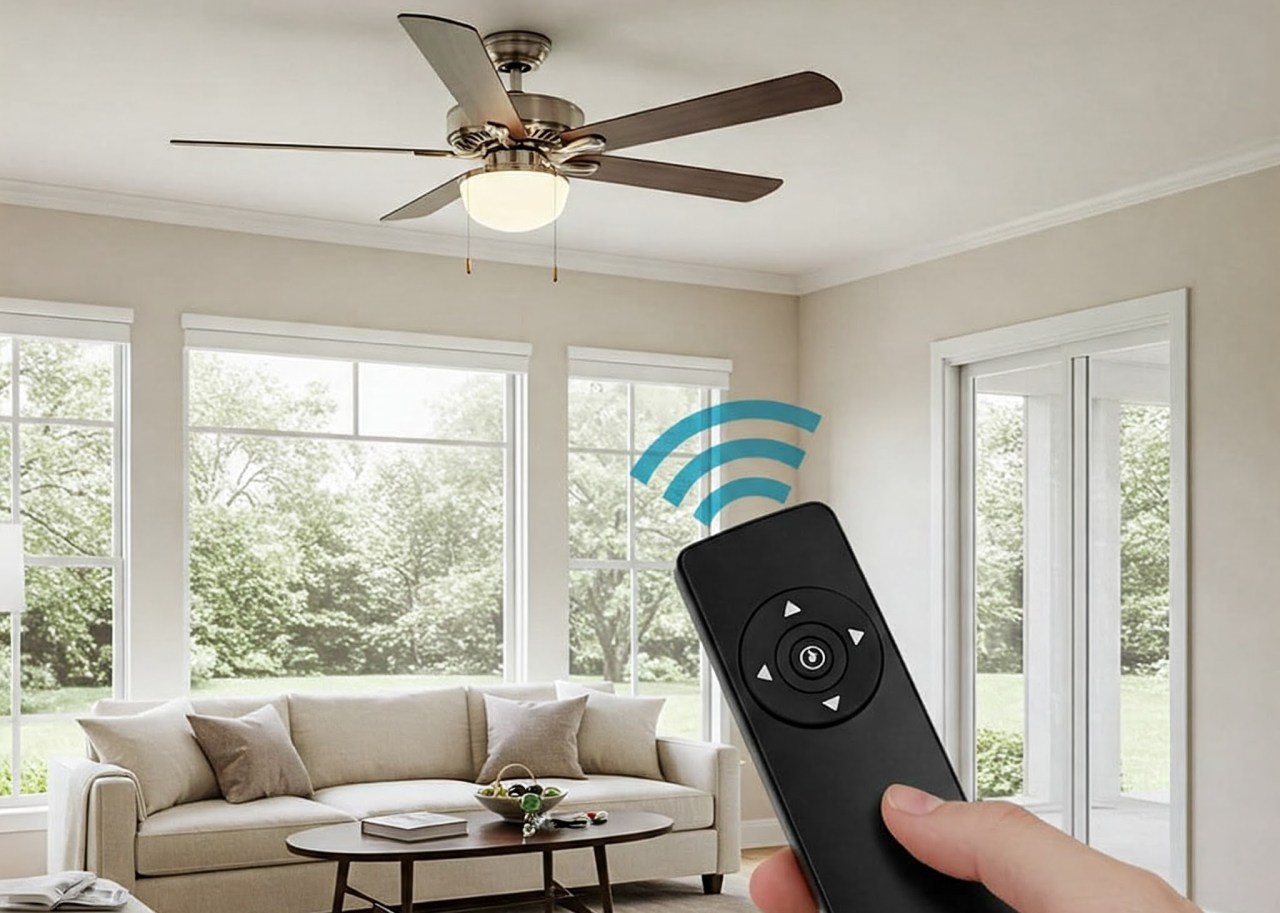
FAQs
Ceiling fans generally last for 10 years or more if well-maintained. You may want to upgrade to a model with a remote control or a more energy-efficient ceiling fan (ENERGY STAR®). If you need to move a ceiling fan from one place to another, this might be a good time to upgrade.
A small ceiling fan will cool a room up to around 100 square feet. A large ceiling fan will cool spaces up to 400 square feet.
Even with central air conditioning installed, there are benefits to installing a ceiling fan in every room. Ceiling fans turning in the right direction in summer and winter can increase comfort in almost any room.
Sometimes, even in Florida, it is too cold to run the AC. However, using a ceiling fan in the winter can save energy and heating costs, help to distribute and maintain heat, and allow you to adjust your thermostat to a lower setting. Turn the ceiling fan blades to clockwise at a low speed so the warm air that usually accumulates near the ceiling is distributed more evenly through the room.
On patios, porches, and gazebos that are protected from the wind, an outdoor-rated ceiling fan can add comfort for family and guests. A counter-clockwise fan rotation in the summer should help create a cooling breeze, while a clockwise fan direction is best for the winter, especially if you want the smoke from a heating stove or fire pit directed away from seating areas.
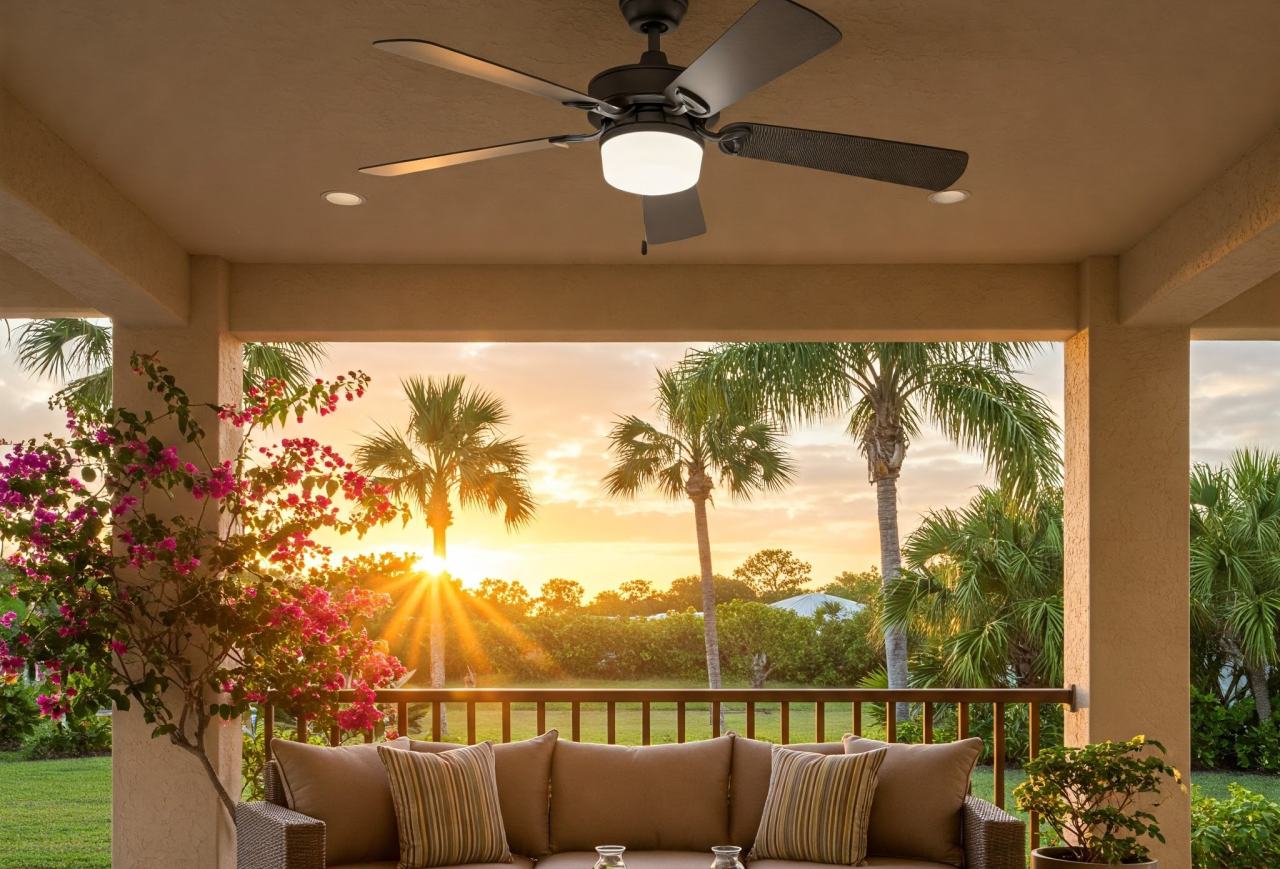
GET ENERGY-EFFICIENT COOLING TIPS…
Understanding how the ceiling fan settings affect comfort and energy efficiency is a simple move that can help you make smart decisions when cooling your home.
Sometimes, however, there’s no substitute for professional advice. Contact an AC professional at One Way Air for an inspection, AC tune-up, and HVAC efficiency tips today.

